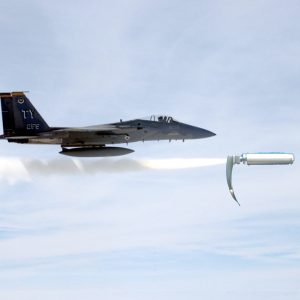Want to experience the greatest in board studying? Check out our interactive question bank podcast- the FIRST of its kind here: emrapidbombs.supercast.com
Author: Blake Briggs, MD
Peer Reviewer: Mary Claire O’Brien, MD
Objectives: identify similarities and differences in asthma and COPD presentations as well as their causes, relevant history and physical exam findings, diagnosis and complications, treatment, and disposition.
Asthma: reversible bronchoconstriction of the upper airways. Type 1 hypersensitivity response with immediate and late (“delayed”) phase.
Common precipitants: environmental (most common cause- worsened by poor compliance and includes cold temperature, pollution, airborne allergens, exercise), infection less common.
Presentation: acute dyspnea over hours to days with wheezing and/or poor air movement on exam.
Assessment: ABC’s as always. Are they protecting their airway? How alert are they? Are they in respiratory distress or able to speak in clear, complete sentences? Are they using accessory muscles to breathe? What is heard on their lung exam? Relevant history: ever intubated? How many exacerbations and hospitalizations per year? ICU admission?
From these questions you must decide what type of asthmatic you are dealing with and from here on out we detail these separately in either column: stable vs unstable (see pdf).
Always the wrong answer on tests and in real life: theophylline, Heliox. We do not give these medications in the ED as they are no longer indicated (as for Theo.), or they are often controversial with limited data (Heliox).
Accelerate your learning with our EM Question Bank Podcast
- Rapid learning
- Interactive questions and answers
- new episodes every week
- Become a valuable supporter
-Leukotriene modifiers/antagonists, LABAs, and Omalizumab should never be given.
Bonus time: NIPPV à BiPAP and CPAP
NIPPV is a form of noninvasive respiratory support delivered via face mask that has a tight seal. Oxygen, inhaled medications, and other gases can be given with higher airway pressures. NIPPV helps “stent” airways open and allow for better oxygenation, ventilation, and relief from obstructive lung disease.
-BiPAP: 2 pressure settings, inspiratory (IPAP) and expiratory (EPAP). Bigger the IPAP = bigger the “push” of air coming in. EPAP is essentially PEEP.
-CPAP: same thing as PEEP à positive end expiratory pressure. This mode keeps a steady stream of pressurized air in the airways throughout the respiratory cycle, allowing for alveoli to remain open and be recruited.
Last resort: Intubation
-Endotracheal intubation does NOT help fix the underlying problem in asthma and COPD. It should only be used if the patient can no longer tolerate the work of breathing and ventilation/airway protection are the concern.
-Delayed sequence intubation:
-Once intubatedà continue efforts to maximize airway obstruction (Albuterol through ETT, Mag, steroids, etc.)
-Vent settings: “permissive hypercapnia”. We want to avoid barotrauma which includes pneumothorax, so we do the following… low tidal volumes, low minute ventilation (6-8 breaths/min), <5 PEEP, Oxygen >88% is fine, and pH does not need full normalization. I:E ratio 1:4.
-In a critical scenario when the patient appears to be arresting or the ventilator states there is high peak pressure, disconnect the vent and compressing the chest to release trapped air. Also, these patients should be heavily sedated and consider short term paralysis so that the patient does not interfere with the ventilator.
COPD
Overview: COPD is just a name. It is divided into emphysema and chronic bronchitis, but for ED purposes these patients receive the same therapy. The good news is the algorithm for COPD workup is almost the same as asthma, except for 2 critical differences: 1) COPD is a destructive pathology of the lung, 2) COPD patients are generally older, have more medical problems, and therefore need a more established workup.
Assessment: same as asthma patients (see above!). In addition, Gold Criteria is used for COPD patients.
Gold Criteria for COPD exacerbation: increased cough, increased sputum production/change in color, increased dyspnea
Causes: unlike asthma, the most common cause of COPD exacerbation is infection (70%). Greatest predictor of COPD exacerbations is prior exacerbations (duh). >2 exacerbations/year or >1 hospitalization/year = high risk COPD patient! (see pdf for stable vs unstable).
*Fluoroquinolones should be used with caution or avoided altogether in many older patients (>65) as they have been shown to cause multiple concerning side effects (neuropathy, delirium, QT prolongation, tendinopathy and arthropathy, hepatic toxicity).
Other quick facts from studies (not for the test but good to know!):
MDI equals Nebulizer delivery for efficacy, however nebulizer preferred in acute setting due to patient tolerance and reliable delivery.
PO equals IV steroids for efficacy and time of onset but it’s the same story as above. We want to optimize patient breathing and tolerance. No swallowing pills.
Steroids can be considered the most important part of treatment so these need to be given as early as possible if able: multiple studies have shown decreased hospital stay, improved lung function and symptoms, reduced treatment failure risk by 50%, and even reduced relapse risk at 1 month.
Nearly all patients should be discharged home with steroids unless contraindicated or if they were recently given a course and are still on that prior course.
Critically, the 5 day “burst” course of 50-60mg daily prednisone found to be the same as tapered prednisone. Burst preferred due to easier dosing and less complications from patient’s mis-dosing.



